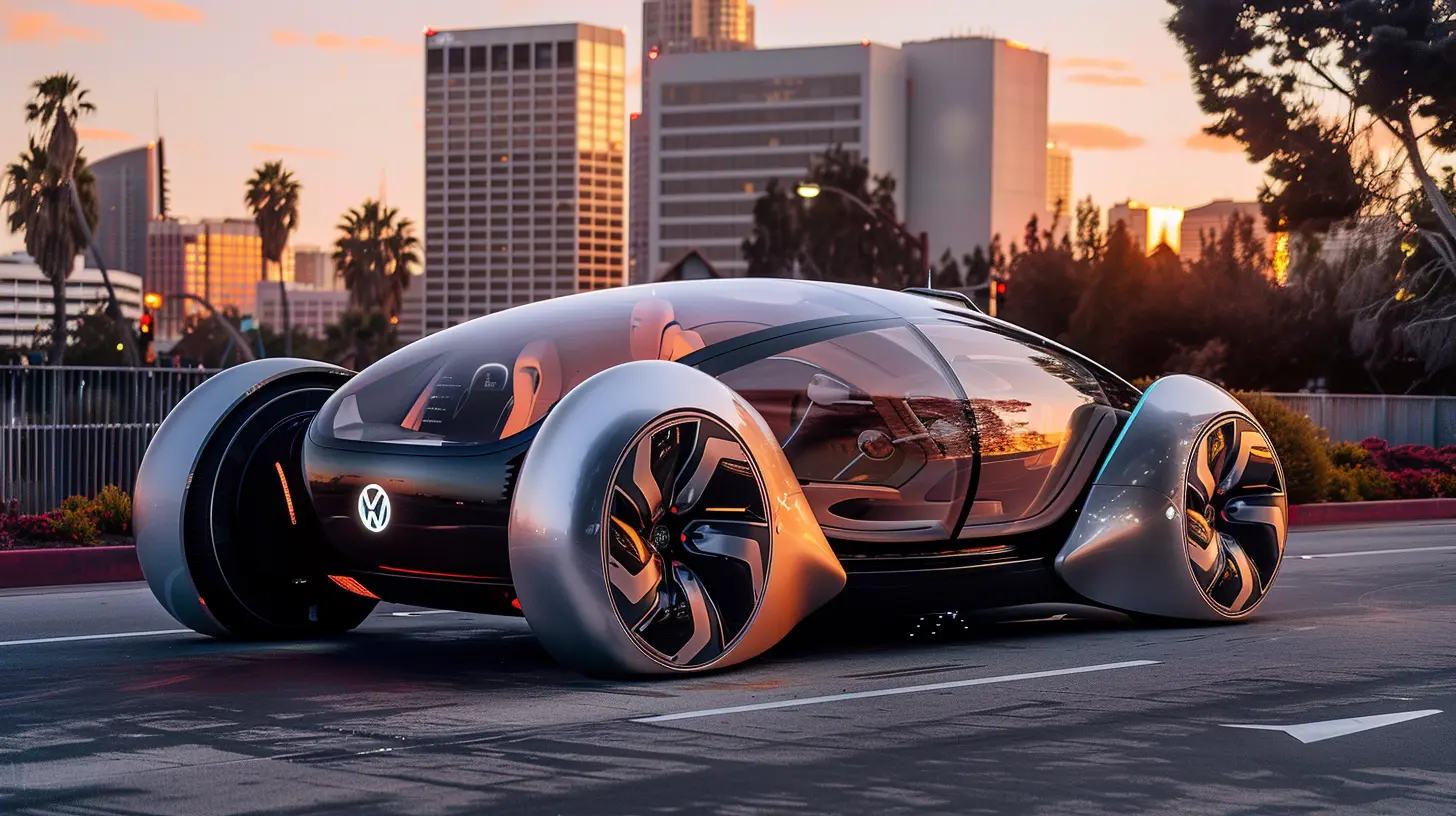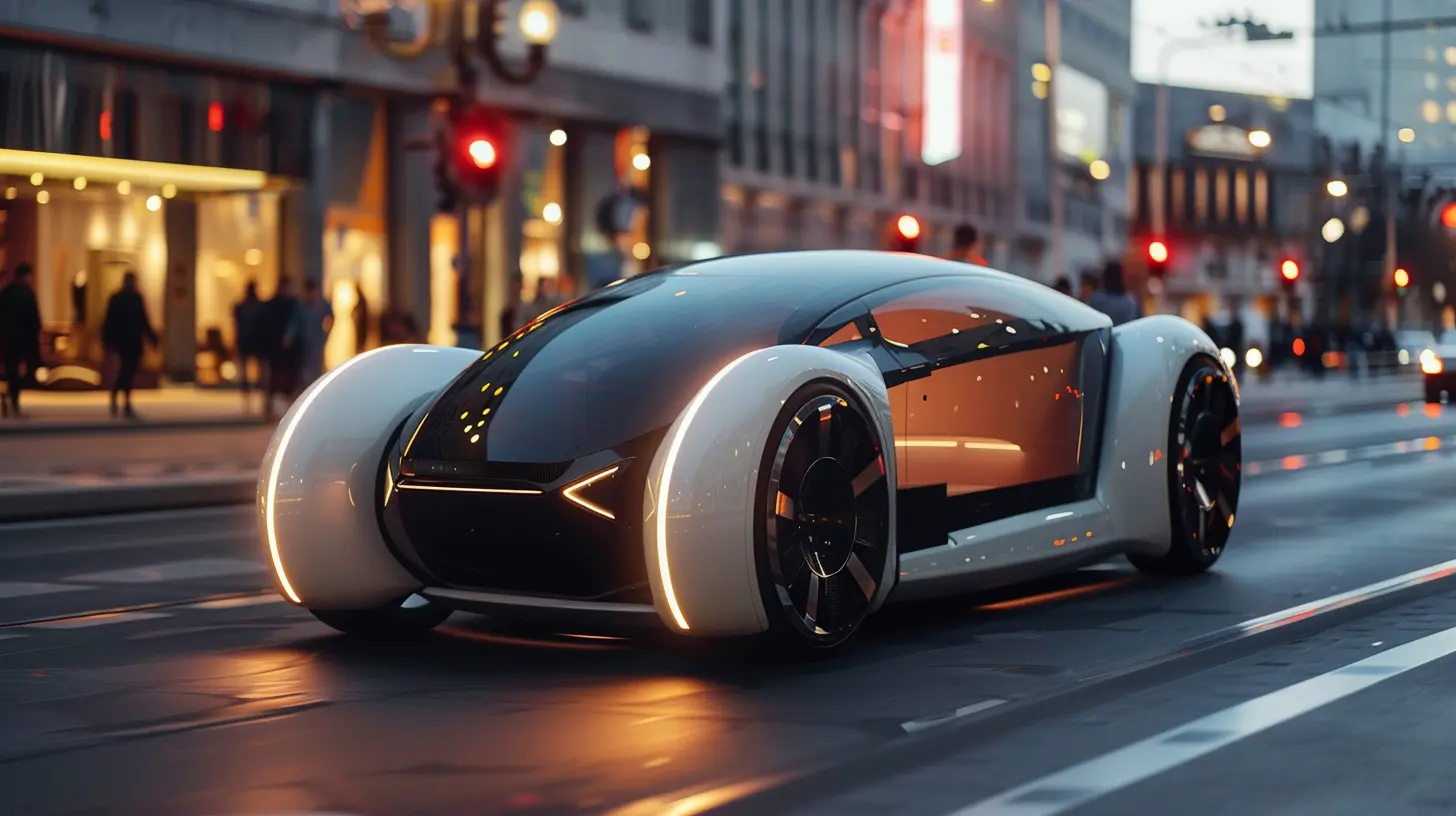How Autonomous Vehicles Are Changing the Face of Road Infrastructure
18 May 2025
The idea of self-driving cars used to feel like something straight out of a sci-fi movie. But today, autonomous vehicles (AVs) are no longer just a futuristic concept—they're becoming a reality. As these intelligent machines take over our roads, they aren’t just altering the way we drive; they're also forcing a complete rethink of road infrastructure.
From traffic signals to lane markings, parking lots to highways, the introduction of AVs is bringing about a massive transformation in how we design, build, and manage our roads. But how exactly are these driverless cars reshaping our road systems? Let’s dive into the details.

The Rise of Autonomous Vehicles
Self-driving cars have been in development for years, with tech giants like Tesla, Waymo, and traditional automakers like Ford and GM leading the charge. These vehicles use a combination of sensors, cameras, LiDAR, and artificial intelligence to navigate roads, avoid obstacles, and ensure passenger safety—all without human intervention.But while AV technology is evolving rapidly, our road infrastructure wasn’t built with self-driving vehicles in mind. That means cities and governments worldwide are now grappling with how to adapt roads for a driverless future.

How Autonomous Vehicles Are Transforming Road Infrastructure

1. Smarter Traffic Signals and Road Signs
Traditional traffic lights operate on timers or simple sensor-based systems. But with AVs on the road, we need something far more intelligent.Autonomous vehicles rely heavily on communication with their surroundings. That's where smart traffic signals come in. Instead of using static timers, these signals could dynamically adjust based on real-time traffic patterns, eliminating unnecessary stops and reducing congestion.
Additionally, road signs may shift from physical boards to digital, connected signs that AVs can interpret directly. Imagine a world where cars receive speed limit changes or road hazard warnings directly through their onboard systems—no more relying on human drivers to read signs!
2. Redefining Road Lane Markings
Ever noticed how faded lane markings make it harder to drive? For self-driving cars, clear lane markings are even more crucial.AVs depend on cameras and sensors to detect road boundaries. Inconsistent, poorly maintained lane markings can confuse these systems, leading to potential safety issues. Governments are now focusing on standardizing and improving road markings to ensure self-driving cars can navigate safely.
Some experts even suggest that in the future, dedicated AV lanes—similar to bus lanes—could help these vehicles operate more efficiently.
3. The Shift Toward Vehicle-to-Infrastructure (V2I) Communication
For autonomous vehicles to function smoothly, they don't just need to "see" the road—they need to talk to it. This is where vehicle-to-infrastructure (V2I) communication comes in.V2I technology enables AVs to exchange data with road systems. For instance, if there's an accident ahead, traffic signals could alert incoming AVs to slow down or reroute. This kind of real-time information exchange could dramatically reduce traffic congestion and make roads safer for everyone.
4. Fewer Traffic Jams and Better Traffic Flow
Let's be honest—nobody enjoys sitting in traffic. One of the biggest promises of autonomous vehicles is smoother, more efficient traffic flow. Thanks to their ability to communicate with each other and predict movement, AVs can eliminate human-caused congestion (like sudden braking or unnecessary lane changes).In cities where AV adoption is high, we could see a drastic reduction in stop-and-go traffic. This means fewer emissions from idling cars, shorter commute times, and significantly improved road efficiency.
5. Parking Lots: Smaller, Smarter, and More Efficient
Parking lots as we know them today may soon become a thing of the past. Since AVs can drop off passengers and park themselves, we won’t need massive parking structures near city centers anymore.Instead, parking lots could be relocated to less congested areas, freeing up valuable urban space for parks, businesses, and housing. Some experts also predict the rise of automated parking garages, where self-driving cars neatly park themselves in compact, stacked formations, optimizing space like never before.
6. Safer Roads with Fewer Traffic Accidents
One of the most exciting aspects of AVs is their potential to drastically reduce accidents. Human error is responsible for nearly 94% of all traffic accidents—whether it's due to distracted driving, speeding, or poor decision-making.Since AVs don’t get distracted, tired, or reckless, they are expected to make roads significantly safer. However, to fully capitalize on this safety advantage, roads must be designed to support AV-friendly environments, including more standardized signage, better road maintenance, and enhanced sensors that assist AV navigation.
7. New Challenges for Road Maintenance
While AVs promise many benefits, they also introduce new challenges for road maintenance. Since they rely on detailed maps and precise lane markings, even small potholes or faded paint lines could lead to navigation problems.To keep up, cities may need to invest more in real-time monitoring and robotic road maintenance systems—using drones or autonomous repair vehicles to quickly fix road issues before they disrupt traffic.
8. Revolutionizing Public Transportation
Public transit could also see a major transformation thanks to autonomous technology. Imagine a fleet of self-driving buses and taxis seamlessly coordinating to provide on-demand transportation, reducing wait times and making commutes more efficient.Autonomous public transport could bridge the current gaps in transit systems, allowing even the most remote areas to have better connectivity without the need for traditional bus drivers or dispatchers.
9. Changes in Highway Design
Highways will also need to evolve to accommodate AVs. Some potential changes include:- Dedicated autonomous lanes for self-driving vehicles to ensure smoother traffic flow.
- Advanced sensor networks embedded in roads to provide real-time updates on traffic conditions.
- Smart exit ramps that adjust based on real-time congestion data.
Highways of the future could look entirely different, prioritizing seamless AV movement over human-driven cars.

The Road Ahead: What’s Next?
While autonomous vehicles are still in their early stages, it's clear that their impact will go far beyond just changing how we drive. Governments, city planners, and infrastructure developers must work together to build roads that support and enhance AV capabilities.Of course, challenges remain. The cost of upgrading road infrastructure, regulatory hurdles, and cybersecurity risks are some of the major roadblocks in the way. But as AV technology continues to improve and adoption grows, these challenges will likely be addressed through innovation and policy changes.
Ultimately, autonomous vehicles are not just changing our roads—they’re redefining mobility itself. The way we build, maintain, and navigate roads will never be the same again. Buckle up, because the future of road infrastructure is already here!
all images in this post were generated using AI tools
Category:
Autonomous VehiclesAuthor:

Kira Sanders
Discussion
rate this article
4 comments
Lys McCracken
This article offers valuable insights into the transformative impact of autonomous vehicles on road infrastructure. It highlights key innovations and challenges, emphasizing the need for adaptive design and policy to foster safer, more efficient transportation systems.
June 14, 2025 at 3:33 AM

Kira Sanders
Thank you for your thoughtful comment! I'm glad you found the insights on innovations and challenges essential for adapting our road infrastructure to autonomous vehicles.
Zareth Cannon
Great article! It's fascinating to see how autonomous vehicles are influencing road design and infrastructure. I believe integrating smart technology will enhance safety and efficiency, paving the way for smarter urban planning.
May 24, 2025 at 3:32 AM

Kira Sanders
Thank you! I'm glad you found it interesting—smart technology is indeed key to transforming urban planning and enhancing safety.
Lira Baker
Great read! It’s fascinating to see how autonomous vehicles are not just reshaping our roads but also our daily lives. The potential for improved safety and efficiency is exciting. Can’t wait to see how cities adapt their infrastructure to support this tech revolution. Future looks promising!
May 19, 2025 at 10:30 AM

Kira Sanders
Thank you! I’m glad you enjoyed the article. The impact of autonomous vehicles on infrastructure and daily life really is exciting!
Olivia Estes
Autonomous vehicles are revolutionizing road infrastructure by necessitating smarter designs, enhanced connectivity, and advanced traffic systems, ultimately leading to safer and more efficient urban environments.
May 18, 2025 at 6:52 PM

Kira Sanders
Thank you for your insightful comment! Indeed, autonomous vehicles are driving significant advancements in road infrastructure, paving the way for safer and more efficient urban living.



